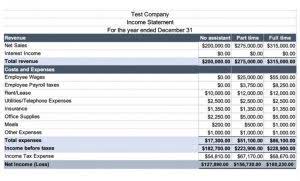Purchase Discount in Accounting
Ставки На Теннис Онлайн%3A Букмекерские Компании%2C Прогнозы%2C Расписание Матчей%2C Высокие Коэффициенты%2C Ставки На Победу а Теннисе На Sports Ru
10. April 2023Main Event Wsope 5m: Československou Družinu Do Dne A Few Povede Martin Kabrhe
12. April 2023
This means the customer will pay only 90% of the list price for each unit. When the credit balance of this account is combined with the other purchases accounts, the result is the amount of net purchases. In this section, we illustrate the journal entry for the purchase discounts for both net methods vs gross method under the periodic inventory system. This includes the illustration of the net method vs gross method of recording purchase discounts both under the perpetual inventory system and periodic inventory system.

Great! The Financial Professional Will Get Back To You Soon.
For example, reducing supply chain costs through process improvements or better supplier management may be more effective in the long run. A buyer debits Cash in Bank if a purchase return or allowance involves a refund of a payment that the buyer has already made to a seller. Purchase discounts can be a great way to increase sales and boost your bottom line. But it’s important to understand how they work and choose the right method for your business. It reduces the expenses or cash outflow of the company, but it could not be considered the revenues under the accounting principle. It is mainly maintained by a company that uses a periodic inventory system.
What is a Cash Discount?

Most businesses, especially manufacturers, sell goods to other businesses on account. This means that a retailer can buy inventory from its supplier on the first of the month and not actually purchase discount definition pay for the goods until the end of the month. For instance, a T-shirt company that employs linear pricing would sell a single shirt for $20, five shirts for $100, and 10 for $200.
What Are the Five Types of Customer Segmentation?
One limitation is that trade discounts may not always lead to increased sales. For example, if the customer does not have the financial capacity to purchase in bulk, a quantity discount may not be effective in incentivizing them to buy more. So, if the per-unit cost for the coat company is $10, the company makes a $10 profit on every single $20 sale. That would of course change if the coat company is able to save money by, for example, buying in bulk from its suppliers. However, in the net method, we record the purchase transaction at the net amount assuming that the payment would be made exactly on or before the agreed credit term.
When businesses offer purchase discounts, it boosts customer morale, encourages repeat purchases, and helps increase overall sales. Cash discounts result in the reduction of purchase costs during the period. It is therefore necessary to record the initial purchase at the gross amount (after deducting any trade discounts though!) and subsequently decreasing purchases by the amount of discount that is actually received.
What are purchase discounts, and why are they important to businesses?
- Purchase Discount refers to the discount that the buyer avails of the goods to settle a particular debt earlier than the actual settlement date.
- Therefore, purchases, along with any payables in the case of a credit purchase, are recorded net of any trade discounts offered.
- The discount is good for the seller because it receives the cash from the transaction faster.
- A buyer debits Cash in Bank if a purchase return or allowance involves a refund of a payment that the buyer has already made to a seller.
- Businesses use discounts and allowances to encourage customers to buy from them or to pay an outstanding bill sooner.
A trade discount is a reduction in the list price of a product or service offered to a customer by a supplier. It differs from other forms of discounts such as cash discounts, quantity discounts, and promotional discounts because it is negotiated between the supplier and the customer. The journal entry to account for purchase discounts is different between the net method vs the gross method. In the gross method, we record the purchase transaction at the original invoice amount while we record at the net of discount received under the net method. Lastly, the same as the perpetual inventory system, at the time of making payment (failing to get the advantage of cash discount), the journal entry to record the payment under both net and gross method are the same. This is because the amount of accounts payable that the company needs to make payment to the supplier under both methods is at the same amount.

This means the net revenue figure is the “true” revenue for the specified period. A buyer debits Accounts Payable if the original purchase was made on credit and the payment has not yet been made to a seller. Hence, the total accounts payable become a total of $15,000 ($1,470 + $30) the same as the original invoice amount.

